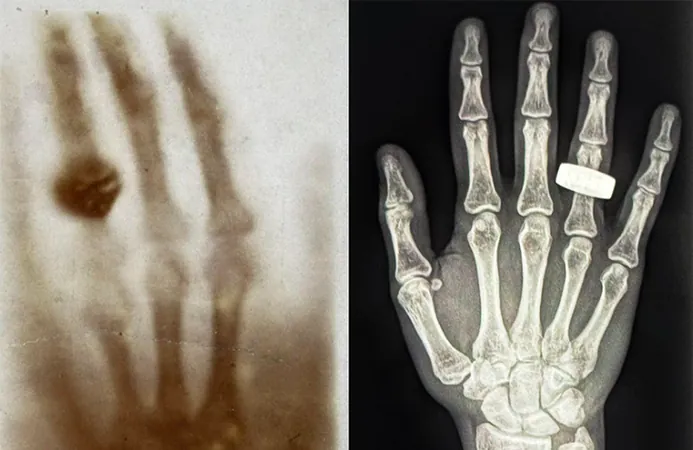
Groundbreaking Development: SpaceXray Project Captures First X-ray Image from Space!
2025-04-08
Author: Jia
Introduction
In an unprecedented achievement, the SpaceXray project has successfully captured the first-ever X-ray image taken from space, aboard SpaceX’s historic Fram2 mission. This thrilling advancement marks a significant milestone in both space exploration and medical technology.
The Fram2 Mission
The Fram2 mission was no ordinary journey; it featured a four-person crew traveling at an astonishing speed of 17,500 miles per hour in a pole-to-pole orbit, soaring approximately 200 miles above the Earth's surface just last week. SpaceXray was one of 22 innovative research studies onboard, all focusing on crucial aspects of human health and the challenges of long-term spaceflight.
Key Partnerships
Key partners in this project included KA Imaging, based in Waterloo, Ontario, and MinXray from Northbrook, Illinois. These companies provided specialized X-ray generator and detector technology originally developed for battlefield applications, showcasing the versatility of modern science. Their collaboration extended to prominent institutions such as MIT, Mayo Clinic, and St. Louis University, all working towards expanding the boundaries of medical capabilities in space.
Expert Insights
Lonnie Petersen, an associate professor at MIT and co-investigator of the SpaceXray project, shed light on the rigorous certification process for hardware intended for spaceflight. "To get hardware certified for spaceflight, it should be miniaturized and lightweight," he explained. "Additionally, safety requirements increase as all devices operate in confined spaces, which pushes the boundaries of technological development." Petersen emphasized that space serves as a remarkable accelerator for technological and medical advancements.
Innovative Technology
Amol Karnick, CEO of KA Imaging, stated that the X-ray receiver they provided was roughly the size of a large laptop, capable of discerning between bones and soft tissues—this innovation could prove invaluable for assessing both personnel and equipment in the challenging environment of space. Before the successful imaging last week, the feasibility of conducting X-rays in space amid natural background radiation was uncertain. “The first images we've seen don’t seem to have any of those issues,” Karnick affirmed, highlighting the project's promise.
Challenges Faced
However, the project was not without its challenges. Petersen acknowledged various factors such as increased background radiation, the precise alignment of equipment and subjects in zero gravity, and the necessity for simplified operating procedures that could be handled by crew members without specialized training. Remarkably, the crew members mastered the process of taking X-rays in just one afternoon. “It was done as a train-the-trainer model," he shared. "The crew practiced on each other, assessed the quality, and stored the images. Although we have only seen one image thus far, we are exceedingly impressed with the quality, skills, and commitment to advancing science shown by the crew.”
Significance of the Achievement
The successful capture of an X-ray in space not only propels forward our capabilities in medical imaging during long-duration missions, but it also opens the door to understanding the effects of space travel on human health. This achievement signifies a remarkable step toward the future of healthcare not only on Earth but beyond, as humanity continues its bold exploration of outer space.
Conclusion
Stay tuned for further developments on this groundbreaking research that is sure to change the face of space medicine forever!




 Brasil (PT)
Brasil (PT)
 Canada (EN)
Canada (EN)
 Chile (ES)
Chile (ES)
 Česko (CS)
Česko (CS)
 대한민국 (KO)
대한민국 (KO)
 España (ES)
España (ES)
 France (FR)
France (FR)
 Hong Kong (EN)
Hong Kong (EN)
 Italia (IT)
Italia (IT)
 日本 (JA)
日本 (JA)
 Magyarország (HU)
Magyarország (HU)
 Norge (NO)
Norge (NO)
 Polska (PL)
Polska (PL)
 Schweiz (DE)
Schweiz (DE)
 Singapore (EN)
Singapore (EN)
 Sverige (SV)
Sverige (SV)
 Suomi (FI)
Suomi (FI)
 Türkiye (TR)
Türkiye (TR)
 الإمارات العربية المتحدة (AR)
الإمارات العربية المتحدة (AR)